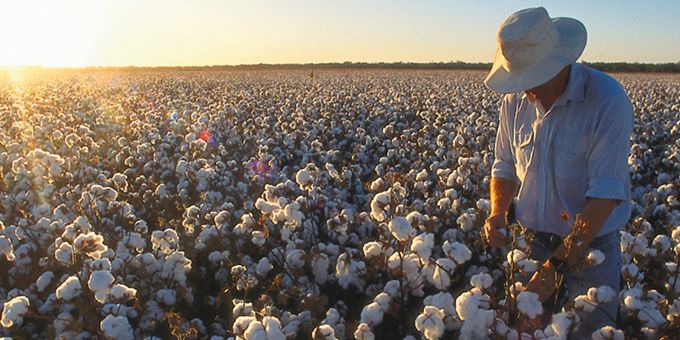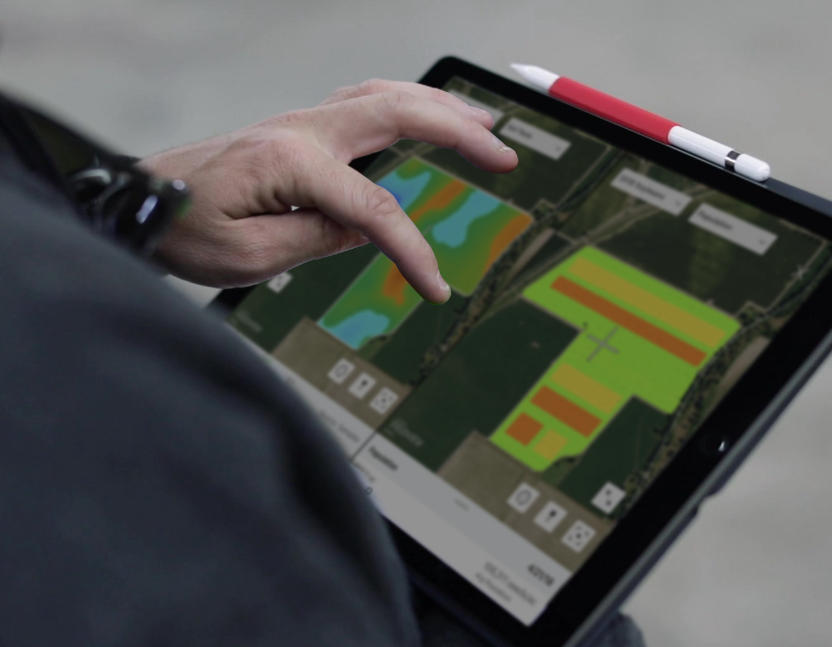Innovation can be counterintuitive. Progress can challenge conventional wisdom. And it’s not always difficult to do something better. Steve has learned this firsthand — and many times over.
 Finding Ease in Innovation: The Journey of a Mississippi Farmer
Finding Ease in Innovation: The Journey of a Mississippi Farmer

Fran DeVille Climate Business Manager | The Climate Corporation
Like many of us in agriculture, Steve Skelton began working on the farm as soon as he was able. “It was just ingrained in me to farm,” he says. Now in his sixties, Steve has built a life-long career in agriculture, primarily growing corn, cotton and soy on his land in the Mississippi Delta. As I’ve worked with Steve over the years, it’s become increasingly clear that he is always looking for ways to improve his operation and his bottom line. And while his operation has had its ups and downs, two things have remained constant: Steve’s relentless passion and willingness to learn new things.

Innovation Through Communication
In many ways, Steve is a farmer’s farmer. When there’s work to do, he puts in long, hard hours. And when the pressure lifts a bit during the off season, you can find him spending time outdoors and with his family. “It’s a good life — and you can’t beat the hours,” he laughs.
Born and raised on the farm, Steve has built an intimate and lasting connection to his land. And as a farmer, that wields important opportunities. He explains, “the relationship I have with my crops really is a communication. Sometimes, when the plants tell you what they need, it may be too late to correct a situation. But there are other times when it’s not; you can see what’s going on and react to help the plants.” For Steve, that is where field tests come into play.

Digital tools like FieldView provide an improved ability to understand what plants need — or don’t — with unprecedented insight and accuracy. Steve considers new technologies to be about more than just listening to the land; they’re also about conversing. By constantly testing factors that impact the plant — growth regulators, fertility, nitrogen applications, phosphorus levels … you name it — he has discovered some surprising ways to support his crops, while also saving time, energy and resources.
What We Think We Know
Innovation can be counterintuitive. Progress can challenge conventional wisdom. And it’s not always difficult to do something better.
Steve has learned this firsthand — and many times over. Before adopting FieldView, he was already working to find better ways of doing things on his farm. So it was a natural progression when Steve partnered with the state corn specialist, Dr. Erick Larson, to find ways to improve his corn yields through different irrigation methods.
In the early vegetative stages of corn growth, dry weather can cause leaf roll. Seeing this in his fields, Steve decided to irrigate. But as he discovered, this impulse was counterproductive, causing the corn roots to stay shallow rather than digging deeper to get moisture the plant needed throughout the season. Looking at Larson’s unirrigated test plot, Steve recalls, “I thought he was letting the crops burn up, but he actually beat me in yield three years in a row with considerably less pumping costs.”
“I thought he was letting the crops burn up, but he actually beat me in yield three years in a row with considerably less pumping costs.” — Steve Skelton
“I Don’t Like Puzzles”
Steve draws an important distinction: it’s not the challenge he likes nearly as much as finding the solution. He adds, “when you fit one or two puzzle pieces together, then three or four fall into place easier. And while this is true on the farm, it’s also true in other areas of my life.”
Granted, finding solutions on the farm has often been easier said than done. But today, technology has made it incredibly intuitive. Steve reflects, “I’m in my sixties, and when I discovered Climate FieldView™, what it could do, and how to use it, it put a spring back in my step about farming.” Real-time field data opens a whole new world for farmers to explore better ways of working. He elaborates, “FieldView is really a lot more convenient than it is a burden. It’s quite the opposite of what a lot of farmers might think. It makes your life easier rather than harder.”
“FieldView is really a lot more convenient than it is a burden. It’s quite the opposite of what a lot of farmers might think. It makes your life easier rather than harder.” — Steve Skelton
These insights are catching on. Steve gets calls from other farmers about the platform and what he’s able to do with it. “There’s a lot of curiosity out there,” he explains. “And I tell them that in my experience, there’s no reason not to use it. It can only help.”
A Better Farm for a Better World
Experimentation not only fulfills Steve’s personal appetite for learning, but also enables him to satisfy his lifelong interest of stewarding his land. Working in the Mississippi Delta, he is blessed with abundant freshwater resources. But that doesn’t offset the need for conservation.
Speaking with farmers throughout the region, Steve emphasizes the need to focus on water quality — especially in preventing fertilizer run-off into local streams and rivers. And while there are many ways to go about it, it all begins by finding ways to use water more efficiently. He elaborates, “every farmer, no matter where they are, has an opportunity and the responsibility to care for the land and its resources thanks to the technologies we have available to us now.”
.png)
In typical fashion, Steve is a passionate and supportive resource for other farmers looking to adopt more sustainable practices. And while much of this boils down to sharing his experiences, it also means exploring new opportunities. As such, Steve is currently learning a lot about soil health and carbon farming as potential ways to improve his farm while also giving back to the Earth. In fact, he is planning to use FieldView in the coming season to help test for microbial population and nutrient density in the soil across various cover-crop scenarios. He understands that, like all things, the insights will take time, but the knowledge is worth the wait. “Farming has taught me patience — and the need to be a good steward of the land and of the soil,” he reflects. “And hopefully this enables me to build an operation I can pass on to my descendants.”
The content & opinions in this article are the author’s and do not necessarily represent the views of AgriTechTomorrow
Comments (0)
This post does not have any comments. Be the first to leave a comment below.
Featured Product

